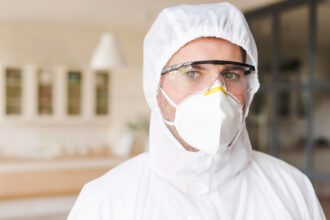When it comes to maintaining a clean and hygienic environment, odor removal plays a crucial role. Unpleasant smells can negatively impact the reputation of businesses, affecting customer satisfaction and loyalty. In commercial cleaning, understanding the science behind odor removal is essential for effective elimination.
The Basics of Odor Formation
Odors are formed when volatile organic compounds (VOCs) bind to olfactory receptors in our noses. These VOCs can originate from various sources, including bacteria, mold, and fungi growth. In commercial settings, odors can emanate from trash, dirty carpets, and unclean surfaces.
The Role of Microorganisms
Microorganisms, such as bacteria and fungi, are primary contributors to odor formation. They feed on organic matter, breaking it down into VOCs that release unpleasant smells. In commercial environments, microorganisms thrive in areas with high humidity and moisture, making it essential to address these conditions to prevent odor formation.
The Importance of Cleaning and Disinfecting
Cleaning and disinfecting are critical steps in preventing the growth of microorganisms. Effective cleaning removes dirt, dust, and organic matter that can harbor bacteria and fungi. Disinfecting, on the other hand, kills microorganisms, reducing the risk of odor formation.
Understanding Odor Removal Techniques
Several techniques are employed to remove odors from commercial environments. These include:
- Oxidation: Involves using oxidizing agents like ozone or hydrogen peroxide to break down VOCs.
- Adsorption: Utilizes materials like activated carbon or silica gel to absorb and trap VOCs.
- Enzyme-Based Cleaning: Employs enzymes that break down protein-based substances, eliminating odor-causing molecules.
The Science Behind Odor Removal Products
Odor removal products typically contain active ingredients designed to target specific types of VOCs. These ingredients can be categorized into:
- Masking Agents: Temporarily conceal odors without eliminating the source.
- Neutralizers: Break down VOCs, rendering them odorless.
- Eliminators: Destroy or remove VOCs, providing long-term odor elimination.
The Role of Ventilation and Air Filtration
Proper ventilation and air filtration are crucial in removing VOCs from commercial environments. This helps reduce the concentration of odor-causing molecules, making it easier to eliminate unpleasant smells.
Case Studies: Effective Odor Removal in Commercial Settings
Several industries, including:
- Healthcare: Where infection control and odor elimination are paramount.
- Hospitality: Hotels and restaurants rely on effective odor removal to ensure customer satisfaction.
- Food Processing: Sanitation and odor elimination are critical in preventing contamination.
Challenges and Limitations of Odor Removal
Despite the advancements in odor removal techniques, challenges persist:
- Complexity of Odor Sources: Identifying and addressing multiple sources of odors can be difficult.
- Residual Odors: Eliminating residual odors that linger after cleaning can be problematic.
Future Developments in Odor Removal Technology
Advances in technology are expected to improve odor removal efficiency, including:
- Nano-Technology: Development of nanomaterials with enhanced adsorption capabilities.
- Biotechnology: Use of microorganisms to break down VOCs, providing a natural solution.
Effective odor removal is crucial in maintaining a clean and hygienic commercial environment. By understanding the science behind odor formation and employing the right techniques and products, businesses can eliminate unpleasant smells, enhancing customer satisfaction and loyalty.
